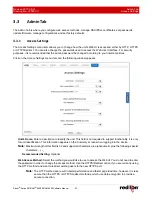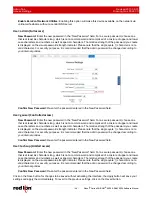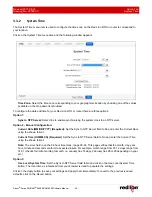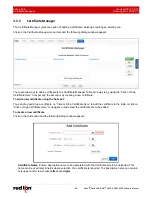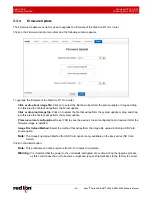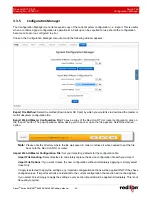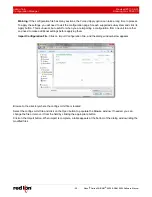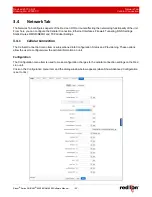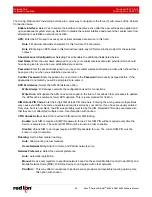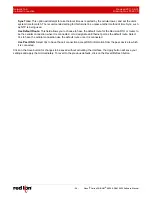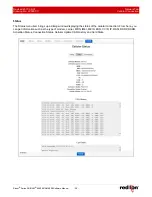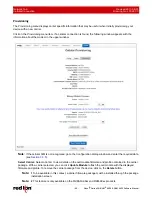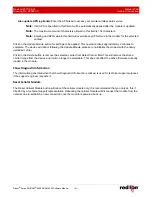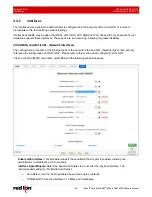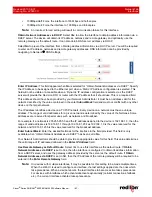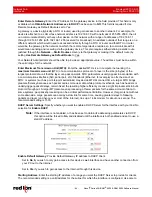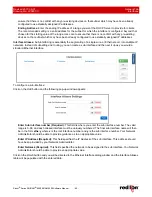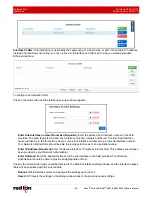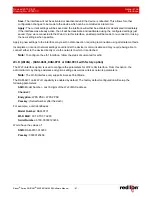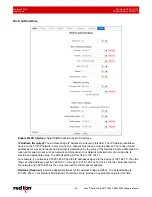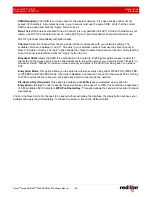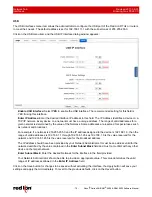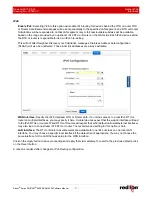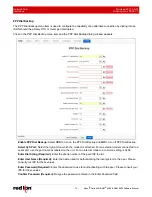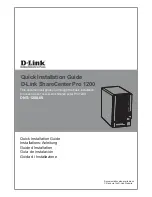
Revised 2017-08-31
Network Tab
Drawing No. LP0997-C
Cellular Connection
Sixnet
®
Series SN/RAM
®
6000 & RAM 9000 Software Manual
- 57 -
IP Family:
Select the IP Family required for your connection.The recommended setting for this field is Auto.
Auto:
Default IPv4, IPv6 for Verizon firmware.
IPv4:
Make IPv4 connection only.
IPv4v6:
Make IPv4 and IPv6 connection.
Note:
An IPv6 session is not guaranteed, and is not considered an error if an IPv4 session is
successful. In order to route IPv6 traffic, Enable IPv6 under network settings. Not all carriers
support IPv6.
Authentication Type:
Select the authentication type for this APN profile. This is the encoding of the
username/password.
Auto:
Automatic authentication.
CHAP:
Challenge-Handshake Authentication Protocol method of authenticating a user or device to an
authenticating entity based on the challenge response.
PAP:
Password Authentication Protocol method of authenticating a user or device to an authenticating
entity based on the password.
Network Speed:
Select the connection speed to be used for the cellular modem connection from the drop
down list provided. Auto uses the widest available defaults, starting at the highest speed available (4G-LTE, if
present). The recommended setting for this field is Auto or Default.
Possible values include:
•
Default: Do not adjust the module settings.
•
Auto
•
LTE: 4G/LTE only
•
2G3G: 3G/2G only, no LTE
•
3G Only: 3G only service
•
2G Only: 2G only service
Ignore Registration:
Attempt to make a cellular connection even when the modem is not registered on a
network. The recommended setting for this field is NO.
MTU:
Enter the MTU size you desire to use. In computer networking, the maximum transmission unit (MTU) of
a communications protocol of a layer is the size (in bytes) of the largest protocol data unit that the layer can
pass onwards. MTU parameters usually appear in association with a communications interface (NIC, serial
port, etc.). Standards (Ethernet, for example) can fix the size of an MTU; or systems (such as point-to-point
serial links) may decide MTU at connect time. A larger MTU brings greater efficiency because each packet
carries more user data while protocol overheads, such as headers or underlying per-packet delays, remain
fixed; the resulting higher efficiency means a slight improvement in bulk protocol throughput. A larger MTU also
means processing of fewer packets for the same amount of data. In some systems, per-packet-processing can
be a critical performance limitation.
However, this gain is not without some downside. Large packets can occupy a slow link for some time, causing
greater delays to following packets and increasing lag and minimum latency. For example, a 1500-byte packet,
the largest allowed by Ethernet at the network layer (and hence over most of the Internet), ties up a 14.4k
modem for about one second.
Recommended Setting:
The recommended setting for this field is 1500.

